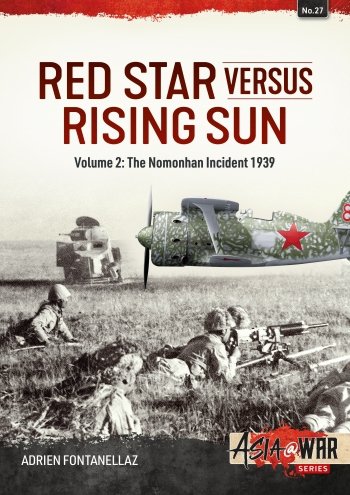-
Załączniki bezpieczeństwa
Załczniki do produktuZałączniki dotyczące bezpieczeństwa produktu zawierają informacje o opakowaniu produktu i mogą dostarczać kluczowych informacji dotyczących bezpieczeństwa konkretnego produktu
-
Informacje o producencie
Informacje o producencieInformacje dotyczące produktu obejmują adres i powiązane dane producenta produktu.HELION
-
Osoba odpowiedzialna w UE
Osoba odpowiedzialna w UEPodmiot gospodarczy z siedzibą w UE zapewniający zgodność produktu z wymaganymi przepisami.
During the first half of the 20th century, the Empire of Japan fought a series of undeclared wars in the Far East against Tsarist Russia and the successor Soviet Union. The first of these, fought in 1904-1905 over rival imperial ambitions in Manchuria and Korea, ended in a clear-cut Japanese victory.
Following the Japanese occupation of Manchuria, in 1931, Japan turned its interest to nearby Soviet territories. The result was a series of border incidents, starting with the Battle of Lake Khasan in 1938, as described in the first volume of Red Star versus the Rising Sun. Maintaining that the border between the Japanese proxy state of Manchukuo and the Soviet-dominated Mongolian People’s Republic was the Khalkhyn Gol (or Khalkha River), the Japanese deployed some of the best units of their army to occupy and secure this area.
Following a military build-up, a series of bitter clashes took place in mid-May and June 1939, after which the Japanese launched an all-out assault in July. Due to heavy casualties, the battle resulted in a stalemate. With tension also rising in Europe and concerned about the possibility of facing a two-front war, the Soviets reacted with a major counter-offensive in August 1939, and defeated the Japanese.
While relatively little-known in the West, this short but bitter war – known as the Nomonhan Incident in Japan, or the Battle of Khalkhyn Gol in the Soviet Union – was a crucial overture to the subsequent Second World War. Having secured its border in the Far East, the Soviet Union was free to concentrate on war in Europe, whilst the Japanese turned their attention to South-East Asia and the Pacific. Although continuing to underestimate their opponents, the Japanese introduced a major reform of their army and after realising the massive material disparity vis-à-vis the USSR, Tokyo and joined the Axis with Nazi Germany and Italy.
The second volume of Red Star versus the Rising Sun examines the land and air forces of the opposing forces in the Far East as they stood in 1939 and offers a detailed description of the conflict on and above the battlefields of Nomonhan. This volume is richly illustrated with period photographs, maps and original colour artworks of the soldiers, aircraft and armoured vehicles deployed in this conflict.








